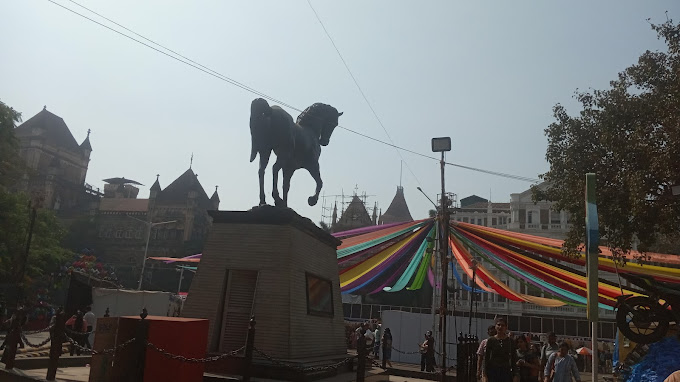Uttarakhand, nestled in the lap of the majestic Himalayas, beckons adventurers from around the world with its awe-inspiring landscapes and thrilling trekking trails. From snow-capped peaks to verdant valleys adorned with colorful blooms, Uttarakhand offers a treasure trove of experiences for trekking enthusiasts. Let’s embark on a journey to explore some of the top treks in this picturesque state.
1. Kedarkantha Trek:
- Duration: 5-6 days
- Difficulty: Moderate
- Highlights:
- The Kedarkantha Trek, situated in the Govind Wildlife Sanctuary, is renowned for its stunning views of snow-capped peaks and lush alpine meadows.
- Traverse through dense pine forests, quaint villages, and meadows adorned with vibrant rhododendrons.
- Summit the Kedarkantha Peak at an altitude of around 12,500 feet, offering panoramic views of the Himalayan ranges including Swargarohini, Bandarpoonch, and Black Peak.
- Experience camping under the starlit sky amidst the tranquil surroundings of Juda-ka-Talab and Hargaon.
2. Nag Tibba Trek:
- Duration: 2-3 days
- Difficulty: Easy to Moderate
- Highlights:
- Offering a perfect getaway for beginners and families, the Nag Tibba Trek is known for its accessibility and stunning views.
- Begin the trek from Pantwari Village and ascend to the Nag Tibba summit at an altitude of around 9,915 feet, offering breathtaking views of the Bandarpoonch, Kedarnath, and Gangotri peaks.
- Camp overnight at the Nag Tibba base camp, surrounded by dense forests and panoramic vistas of the Himalayas.
- Enjoy the tranquility of the Garhwal region and witness the unique flora and fauna along the trail.
3. Valley Of Flowers Trek:
- Duration: 4-5 days
- Difficulty: Easy to Moderate
- Highlights:
- Embark on a mesmerizing journey to the Valley of Flowers, a UNESCO World Heritage Site renowned for its vibrant floral diversity.
- Trek through lush green meadows, dense forests, and pristine streams, surrounded by a myriad of colorful flowers including orchids, poppies, and primulas.
- Explore the enchanting Hemkund Sahib, a sacred Sikh pilgrimage site, nestled amidst snow-clad peaks and crystal-clear lakes.
- Witness the breathtaking beauty of the valley of flowers trek during the peak blooming season from July to September, when the landscape transforms into a kaleidoscope of colors.
4. Har Ki Dun Trek:
- Duration: 7-8 days
- Difficulty: Moderate
- Highlights:
- The Har Ki Dun Trek, nestled in the Garhwal Himalayas, offers a perfect blend of natural beauty and cultural heritage.
- Trek through ancient villages, terraced fields, and dense forests of pine, oak, and deodar trees, adorned with diverse flora and fauna.
- Reach the scenic valley of Har Ki Dun, surrounded by snow-capped peaks like Swargarohini and Bandarpoonch, offering breathtaking views.
- Immerse yourself in the local culture and traditions of the remote villages along the trail, and witness the warmth and hospitality of the villagers.
Planning Your Trek:
- Best Time to Trek:
- The ideal time for trekking in Uttarakhand is from April to June and September to November, when the weather is pleasant and the trails are accessible.
- Permits and Permissions:
- Some treks, such as Valley of Flowers and Har Ki Dun, require permits from the forest department. Make sure to obtain the necessary permits before embarking on your trek.
- Safety Precautions:
- Always trek with a knowledgeable guide, carry essential gear including trekking shoes, warm clothing, and first aid kit, and stay hydrated throughout the journey.
- Responsible Trekking:
- Practice responsible trekking by minimizing your environmental impact, respecting local customs and traditions, and leaving no trace behind.
Embark on an unforgettable journey amidst the stunning landscapes of Uttarakhand, where every step leads to new discoveries and cherished memories. Whether you’re a seasoned trekker or a beginner, Uttarakhand promises an adventure of a lifetime amidst the breathtaking beauty of the Himalayas.
History
The history of trekking in Uttarakhand, a picturesque state in northern India nestled in the Himalayas, is deeply intertwined with the region’s spiritual, cultural, and natural heritage. Here is a concise overview of the evolution of trekking in this enchanting region:
Ancient and Medieval Periods
- Spiritual Pilgrimages: Uttarakhand, known as the “Land of the Gods” (Devbhumi), has been a significant destination for spiritual journeys for centuries. Pilgrims have trekked to sacred sites like the Char Dham (Yamunotri, Gangotri, Kedarnath, and Badrinath) since ancient times. These treks, often arduous, were undertaken as acts of devotion and penance.
- Trade Routes: The region’s rugged terrain also hosted ancient trade routes connecting India with Tibet and China. Traders and nomads traversed these paths, contributing to the development of trails that would later become popular trekking routes.
British Colonial Era (19th to early 20th century)
- Exploration and Mapping: British explorers and surveyors, such as those involved in the Great Trigonometric Survey of India, mapped the region extensively. Their expeditions paved the way for modern trekking by documenting routes and the geography of the Himalayas.
- Mountaineering Beginnings: The colonial period saw the beginnings of mountaineering in the Himalayas, with several peaks in Uttarakhand being explored and summited. This period laid the groundwork for the future of trekking and adventure sports in the region.
Post-Independence (1947 onwards)
- Development of Trekking Routes: With India’s independence, there was a renewed interest in exploring the natural beauty of Uttarakhand. The Indian government and various trekking clubs started developing and promoting trekking routes.
- Popular Treks: Classic treks such as the Valley of Flowers, Roopkund, and Har Ki Dun gained popularity among Indian and international trekkers. These treks showcased the region’s diverse flora, fauna, and breathtaking landscapes.
Modern Era (21st century)
- Adventure Tourism Boom: Uttarakhand has emerged as a major hub for adventure tourism. The state government and private organizations have invested in infrastructure, safety measures, and sustainable practices to accommodate the growing number of trekkers.
- Newer Routes and Eco-Tourism: Newer trekking routes, such as Kedarkantha, Kuari Pass, and Pangarchulla, have been developed. There is a growing emphasis on eco-tourism and responsible trekking practices to preserve the fragile Himalayan environment.
- Cultural and Community Involvement: Treks now often incorporate cultural experiences, involving local communities in tourism activities. This has not only provided economic benefits to remote villages but also enriched the trekking experience with local traditions and hospitality.
Trekking in Uttarakhand has evolved from ancient pilgrimage routes and trade paths to a modern adventure sport, drawing enthusiasts from around the world to explore its majestic Himalayan landscapes and rich cultural heritage.





